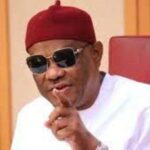…Stakeholders seek inclusive reporting
By Stella Odueme, Hassan Zaggi & Daniel Tyokua
International Press Centre”s, (IPC) investigative report have faulted the media’ s inadequate reportage of women, youth and Persons With Disabilities (PWDs) based-issues while reporting the country’s democratic processes, especially during electroneering, campaigns and voting in the 2023 elections.
The report was part of the EUSDGN project, the media monitoring unit of the IPC under an ongoing 18-month IPC/EUSDGN II media monitoring project that monitored the coverage of the 2023 off-cycle elections in Kogi, Bayelsa and Imo as reported in 20 print/online newspapers, including The Authority and the INEC website/Twitter.
The report also centred on professional coverage of political parties activities, conflict-sensitive reporting, inclusivity in the coverage of women, youth, PWDs, coverage of EMB, and prominence acorded stories and sources that featured the discourse during the period under review.
The findings of the report were presented at a virtual meeting during which various perspectives on issues in the context of deepening media coverage of women, youth, and disability groups in reporting of electoral and democratic governance issues were addressed.
The report shown that the media in their reports of the 2023 elections, gave prominence to the major political parties and their candidates to the disadvantages of the smaller parties and their flagbearers.
For instance, out of 18 political parties, five political parties accounted for 96.3 per cent while other parties’ shared 3.7 per cent of the reportage.
“Media tagged male candidates as ‘major contenders’, ‘front runners’ or ‘main candidates’.” This is even when the election had not been conducted to determine this superlative title.
“Only 8 of the parties made front pages with APC, the ruling party having 43.9 per cent;, PDP 30.7 per cent; NNPP; 10.6 per cent.
“Of the 608 sources in the 860 relevant reports in the media, 19 sources, representing 3.5% of these sources were female politicians, while 9 sources, 2% were youths, and 5 sources, 0.5% were WDs.
“Meanwhile, out of the 442 relevant stories published online, with 283 sources, 8 sources, 4.5% were female politicians, 1 PWD source, 0.4 per cent was used, and 3 sources, 1.1 per cent were youths.
“No female candidates were used as sources in the off-cycle elections in both the print and online media.
“Women stories appeared in CSOs funded research and promoted reports in the media, but not necessarily products of concerted efforts by the media.”
According to finding on the off-cycle elections, only 3 out of the 51 candidates are women reports, while 3.5 per cent, representing 19 women politicians were sources in print media, 4.5 per cent, representing 8 number of sources were women in the online.
The breakdown of the 860 stories monitored in the print media, inclusive issues on women, youths and PWDs featured in 13 stories representing 1.5 per cent of total relevant stories showed that 2 stories, 0.5 per cent of the overall total stories focused on the youths, 9 reports, 1 per cent focused on women and 2 stories. 0.5 per cent were on PWDs.
The report says that in terms of being used as sources, the PWs had a low voice representation in the print media with 5 stories, 0.5 per cent and 1 story, 0.4 per cent in the online.
It equally indicated that inclusive issues received more coverage online at 7 per cent than the print media, 1.5 per cent while issues affecting women received less coverage in print media, 1 per cent and online media 3.2 per cent.
On trends in coverage of the Election Management Board, EMB- INEC showed that media reports on INEC with high focus on disputes were 388 in print, 45 per cent and 182 reports in the online media, representing 64.9 per cent of relevant stories.
In his paper presentation titled ‘The Imperatives of Mainstreaming Women, Youth and Disability Groups in Democratic Reporting’ ” Prof. Jide Jimoh of the Department of Journalism. Schools of Communication, Lagos State University, LASU, he attributed
the absence of equitable access to the media by these vulnerable groups to the financial might of the major parties to be able to drive media coverage through press conferences, rallies, and releases, the case of he who pays the piper datates the tune.
Executive Director, IPC, Mr. Lanre Arogundade reiterated the need for deliberate consciousness on the part of the media to report women, youth, PWDs and rural people based issues.
Also, Executive Director, Tat Africa, Mr. Jake Epelle also urged the media to give attention to vulnerable groups in their reports.
Vaneza Gregory, EU Project Coordinator, Nigeria Women Trust Fund, NWTF, called on the media to be gender sensitive.
On her part,
Project Officer, YIAGA Africa, Toll open Famoroti urged the media to give voice to the young people and the vulnerables in their coverage.
All the speakers advocated inclusive reportage of all stakeholders in the Nigeria project.
The speakers equally called on the media to keep abreast of processes, trends, patterns and developments as events don’t happen in vacuum.
They said the media must be intentional and deliberate in their quest towards inclusive reporting of not only electoral process but women, PWDs, youth and rural issues.
The report recommended use of conflict-sensitive journalism with the following principles: Sensitivity in language.
Coverage of peace initiatives.
Gender and other sensitivities, and Use of conflict analysis among others.
“The overall objective of the project is to strengthen the media for fair, accurate, ethical and inclusive reporting of the electoral processes and elections.”



